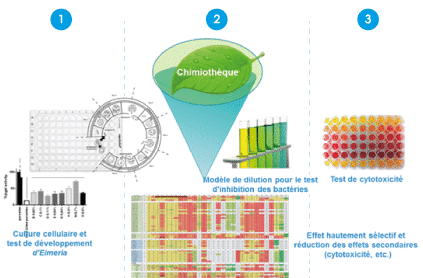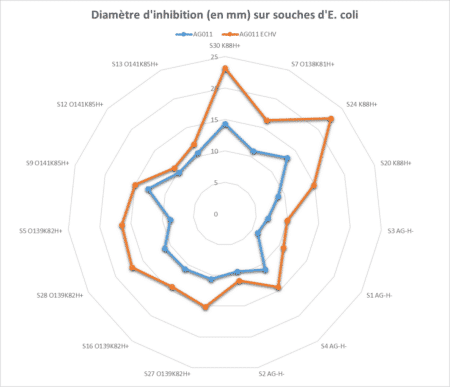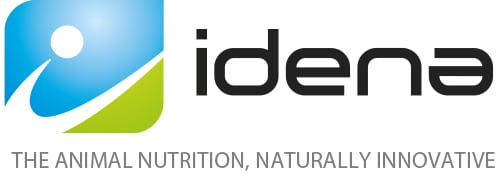IDENA’s R&D department develops in vitro tools to screen new active ingredients and better understand their modes of action.
In vitro tools: a major challenge for the development of effective and non-toxic nutritional solutions
Identifying new active ingredients is a key step in the creation of new nutritional solutions. During its product design process, IDENA values the development of in vitro tools. These tools are a major issue for the creation of effective nutritional solutions that are not toxic to animals. These in vitro models lead to a better understanding, firstly, of the mode of action of the active ingredients on the parasite and the bacterium, but also of the interaction between the parasite and the animal host cell. They bring to light the cell signalling pathways that are involved. And last but not least, they are a key tool to validate our products on strains isolated from the field and then to adapt our solutions to the various sanitary environments encountered on the field.

Figure 1: Summary of the various in vitro tests developed by IDENA
Bacterial inhibition test – screening and field validation tool
IDENA develops in vitro bacterial inhibition tests on numerous pathogens or beneficial organisms isolated from livestock farms. These models can be carried out:
– In liquid medium – to determine the minimum inhibitory concentration (MIC, measured in µg/ml),
– Or in solid agar medium – to determine the inhibition diameter. This is known as Phytogram (measured in mm).
These models enable us to screen a substantial number of active ingredients and to confirm, on the field, their adequacy to on-farm isolated bacterial strains.

Figure 2 : Phytogram of 2 different galenic forms of active ingredients on 15 E.Coli strains, isolated on piglets at weaning
Parasite Inhibition Test – Screening Tool
In vitro parasite cultures measure antiparasitic and antiprotozoal activity. IDENA has developed models:
– on Histomonas (IDENA-University of Vienna-Austria Vetmeduni)
– or on nematodes (IDENA-Xunta de Galicia, 2015) (see Table 1)
| Product | EC50 (ppm) | EC80 (ppm) |
| 1 | 165.7 | 3096.7 |
| 2 | 5.8 | 121.3 |
| 3 | 83.6 | 9783.0 |
| 4 | 43.8 | 1088.8 |
| 5 | 41.0 | 678.6 |
| 6 | 6.2 | 489.5 |
| 7 | 447.4 | 1896.7 |
| 8 | 137.9 | 1295.5 |
| 9 | 18.9 | 380.3 |
| 10 | 304.1 | 4511.7 |
| 11 | 63.7 | 4506.2 |
| 12 | 111.5 | 1270.0 |
| 13 | 291.1 | 7590.6 |
Table 1: EC50 and EC80 of 13 natural active ingredients on Caenorhabditis elegans nematodes (Xunta de Galicia, 2015)
Back to News

